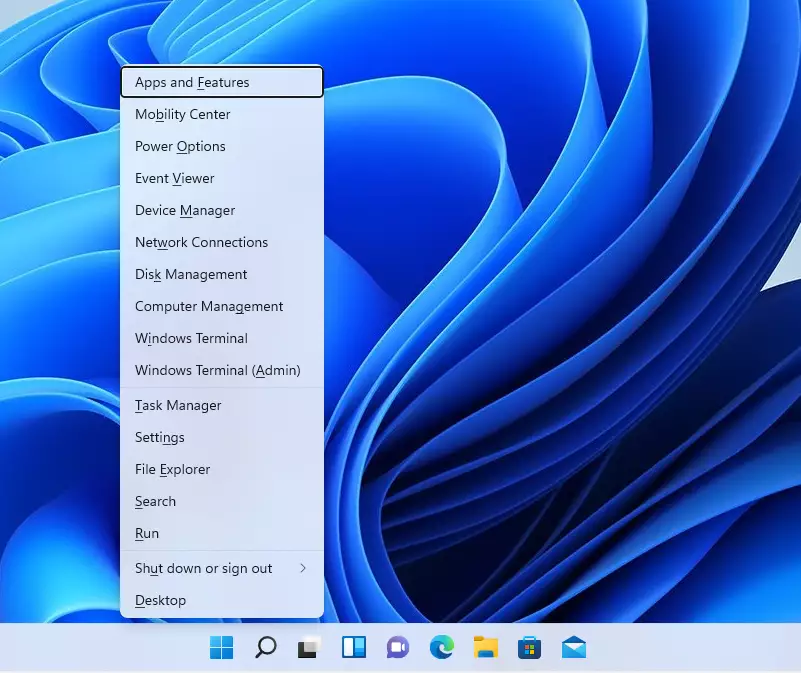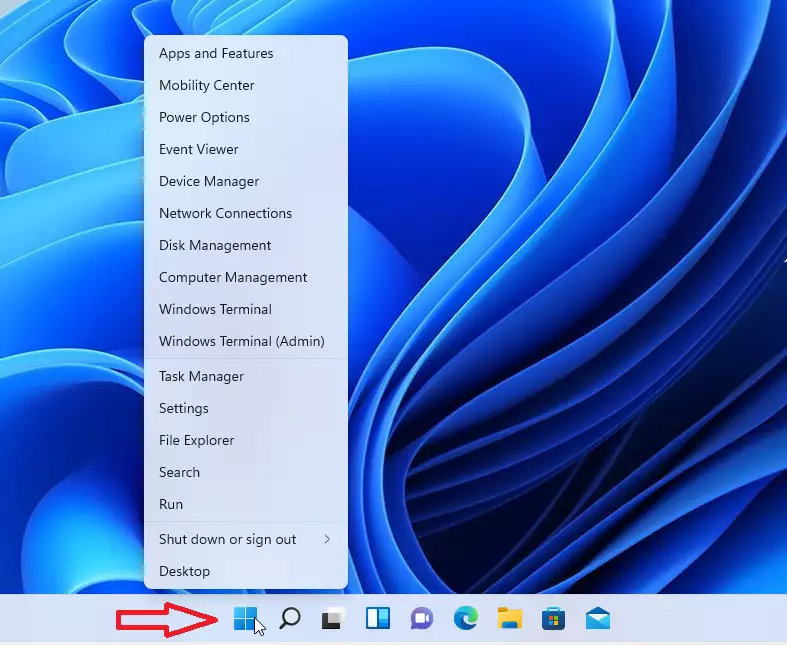This article explains how to launch and use the Power User Tasks Menu in Windows 11.
First launched in Windows 2008, the Power User Tasks Menu (power user menu) provides quick access to essential Windows 11 features.
Several settings and features on the power user menu are unavailable on the standard Start menu. This menu isn’t readily available to prevent inexperienced users from stumbling upon it and using it to cause system instability.
If you’re a power user and want to use the power user menu, the steps below show you how to launch it and use shortcut hotkeys to open additional settings and features.
Open the power user menu on Windows 11
As mentioned above, Windows has a power user tasks menu for power users to access advanced and essential settings on Windows quickly. It is hidden so inexperienced users can not stumble on it and start using it.
Press the Windows key and X on your keyboard to launch or open the power user menu.

Pressing the keyboard shortcut above will launch the power user menu. The menu should open ready for keyboard command Hotkeys: Below are Hotkeys and descriptions of the commands:
| Option | HotKeys | Description |
| Programs (Apps) & Features | F | Opens Windows Programs & Features |
| Mobility Center | B | Launch Windows Mobility Center |
| Power Option | O | Opens Windows Power Options |
| Event Viewer | V | Opens Windows Events viewer |
| System | Y | Opens Windows Systems Properties |
| Network Connections | W | Opens Network Connection pane |
| Disk Management | K | Opens Disk Management on Windows |
| Computer Management | G | Opens Computer Management settings |
| Command Prompt | C | Opens Windows Command Prompt |
| Command Prompt as Admin | A | Opens the Command Prompt as Admin |
| Tasks Manager | T | Opens Windows Tasks Manager |
| Control Panel | P | Opens Windows Control Panel |
| File Explorer | E | Opens Windows File Explorer |
| Run command box | R | Opens the Run command box |
| Desktop | D | Hide all windows and display desktop |
When you open the power menu using the Windows key + X, you can use the hotkeys above to open the above features and settings.
For example, Win key + X, U, and S put your computer to sleep.
Another way to launch the Power user menu is to right-click on the Start menu on the Taskbar.
When you right-click the Start button to open, you can’t use the hotkeys above but navigate using your mouse.

That should do it!
Conclusion:
In summary, the Power User Tasks Menu in Windows 11 provides quick access to essential features for advanced users. Key points to remember include:
- Access the menu easily using the shortcut Windows key + X.
- Utilize hotkeys for fast navigation to various settings.
- Right-clicking the Start menu is an alternative method, though it does not support hotkeys.
- Be cautious when using advanced features, as they may affect system stability.
- This menu is designed to streamline access to important tools without overwhelming inexperienced users.

Leave a Reply Cancel reply